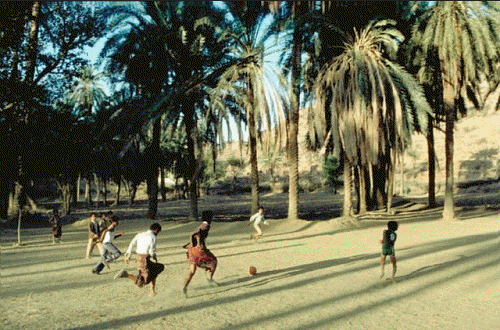About Us
Introduction
Environmental health risks to children are increasingly being recognized as a key concern now and into the next century. The United Nations Convention on the Rights of the Child states that the child has the right to enjoyment of the highest attainable standard of health and to health care facilities, and that children have the right to a safe environment. 198 Countries have signed the Convention. All UN member states except the U.S.A and Somalia have signed.
Civil society organizations, professional associations, advocacy leaders, government officials and intergovernmental organizations are beginning to recognize children’s environmental health as a critical issue in the development of healthy, sustainable and just communities. The field of children’s environmental health is growing, and it seems to be timely to establish a central meeting place at international level to provide information on factors affecting children’s environmental health. It is relevant to establish a forum that facilitates access to facts and data globally; forum that helps to identify and connect with others working in the field of pediatric environmental health.
Preventing the effects of environmental degradation to human health – in particular child health – is a fundamental component of sound environmental policy and decision-making. The need exists for an international forum focused on children’s environmental health, to ensure that we conduct the necessary research, share the latest data, link with colleagues from other regions, and strengthen the interdisciplinary and international nature of children’s environmental health work. INCHES will aspire to meet this need.

Partners from all regions of the world will work together within the framework of the network to achieve the following goals:
- increase understanding of and accord on how environmental factors influence child health;
- create a global clearinghouse of research and information on children’s environmental health;
- ducate and facilitate information exchange on the best practices and policies in children’s environmental health;
- identify information gaps and stimulate to new research; and
- advocate for children’s environmental health in the intergovernmental arena.
THE NETWORK: INCHES
INCHES will function as a coordinating structure for organizations and individuals involved with children’s environmental health. Members will include: national and international professional associations, research and policy institutes, advocacy organizations, universities, parents’ and children’s organizations, national and intergovernmental agencies, and individuals. INCHES will reflect the perspectives of a wide spectrum of professions on the relationships between environment, health and children.
INCHES will provide a strong voice at the global level to promote the protection of children from environmental and safety hazards. This voice will represent many interests and will speak from the experience and expertise of members of the network, of science and of the best practices in policies and programmes.
The Internet will provide a platform for many of INCHES’ activities. Through a Web site and extensive on-line communication, INCHES will create bridges among members in various regions and will increase the accessibility of information on children’s environmental health. The use of the Internet is developing rapidly, but the distribution of hardware and software and thus the accessibility is uneven. INCHES will assist under-served regions and population groups that are lacking in electronic capabilities in their efforts to obtain access to the Internet.
DEVELOPING INCHES In 1997, Childwatch International and the Dutch Association of Environmental Medicine initiated discussions via e-mail with a range of organizations on the formation of an international network on children’s environmental health. In August 1998, they invited many of these discussants to a workshop in Amsterdam prior to the International Conference on Children’s Environment and Health. The purpose of the workshop was to continue the discussion and to take the first steps of the International Children’s Health and Environment Network (ICEH), now called the International Network on Children’s Health, Environment and Safety.
Approximately 25 people participated, including:
- Representatives from international and national advocacy organizations
- Researchers and scientists from North America and from the European region, including the Russian Federation, Uzbekistan and the Ukraine, and from Latin America;
- Officials of Intergovernmental organizations; and
- Government officials
In the initial phase of the development of INCHES, the founding members of INCHES will share the responsibility for developing the network. At the International Conference on Children’s Environment and Health a Coordination Committee and an Editorial Group were established. These groups will prepare the structure of the network. and will identify key areas of focus for INCHES, including major health effects and contaminants of interest, and will strive to place information about INCHES on the Internet as soon as possible.

In its first phase of development, INCHES will identify the following:
- priority issues for various regions within the membership of INCHES;
- new members and users;
- experts and existing research;
- major research themes and gaps in the research; and
- key points of policy intervention at the regional and global levels.
All of these items will be ongoing activities of INCHES. Once INCHES is established, the main activities will be to:
- collect, categorize and disseminate research information on children’s environmental health;
- create opportunities for colleagues in the field to share experiences and learn from each other;
- advocate at the international level for policies that reflect and respect the special vulnerability of children;
- support the creation of local, national and regional networks on children’s environmental health;
- and organize meetings, seminars and symposia on emerging issues in this field.
The focus is on children, but due consideration will be given also to research on the potential consequences in a broader sense of exposure to human beings to hazardous factors early in life. It is thus essential to avoid environmental disorders that may occur in adulthood due to exposures suffered as a child or a fetus.
The World Health Organization defines environmental health as follows:
“Environmental health includes both the direct pathological effects of chemicals, radiation and some biological agents and the effects (often indirect) on health and well-being of the broad physical, psychological, social and aesthetic environment, which include housing, urban development, land use and transport”.
Promoting children’s health requires protecting them from harmful environmental exposures. These exposures include: harmful physical, chemical and biological microorganisms and pollutants in water, air, soil and food. These exposures may be intentional or inadvertent as well as accidents. The immediate environment of children often includes a range of health hazards from lack of access to clean safe water, inadequate sanitation, lack of nutritious food, and inadequate waste management systems.
Children may be affected as well by broader environmental pressures, including climate change and persistent organic pollutants, global environmental changes such as global warming, decreases in the ozone layer, and the Greenhouse effect. Suggested indirect effects on human health include decreased immunity and vaccine efficacy, and decreased crop and plankton availability.
Why are children different?
Children are in a dynamic state of growth, as many vital systems such as the nervous, immune, and respiratory systems are not fully developed at birth. Because children are still developing, exposure to environmental hazards may result in disruption of their normal development and may cause permanent damage.
It is established that the fetus is highly vulnerable to environmental exposures, like DES, tobacco smoke, lead. The fetus should be protected from environmental hazards including smoking by the pregnant mother. Even before conception the “fetus” is in danger: The relationship between pesticide residues in water, food or from handling pesticides in agricultural business has been considered to affect sperm quality.

Until they are fully grown, children consume more food and fluids and breathe in more air, relative to their body size, than adults. Children spend more time closer to the ground than adults, and the hand-to mouth behavior of younger children increases their exposure to toxicants in dust and soil as well. Crowding, for example in day care institutions and schools increases the risk of indoor environment, for example transmission of infections, noise and bad indoor quality.

Especially small children depend totally on adults creating a healthy environment and protecting them from environmental hazards. New Research findings, and concerns and questions from environmental groups, parents and consumer interest organizations have inspired new interest in the relations between environmental factors and child health.
INCHES will seek to provide facts and answers to organizations, schools, parents and local and regional authorities to questions about environmentally induced or triggered health effects to children.

Children have still got many years to live, so protection from environmental hazards early in life is cost effective with regards to saved years of life with potential good quality. Children are themselves active in environmental health protection: they are interested in environment and health matters, they are detectives and activists, agents of change. Children are complex and competent and, according to age and development, are full of capacity for tending their own health and environment.
foto11

